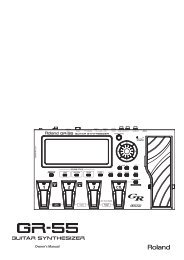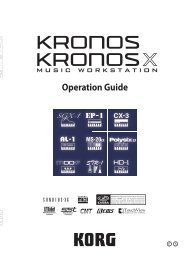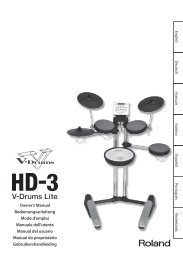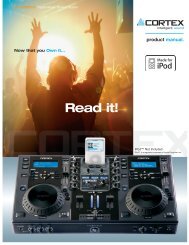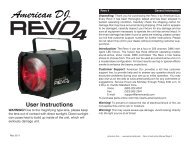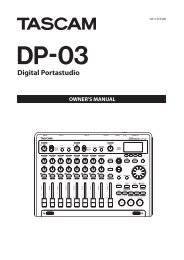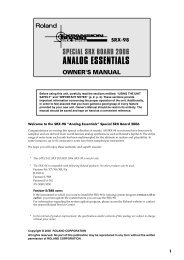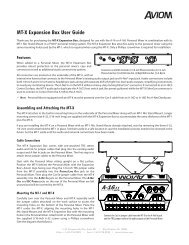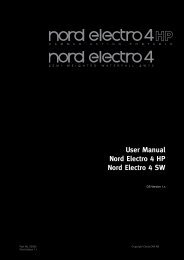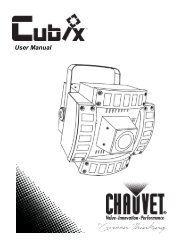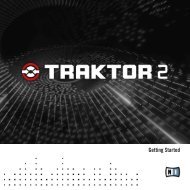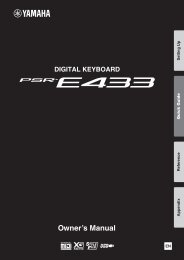SCS.1d - Stanton
SCS.1d - Stanton
SCS.1d - Stanton
Create successful ePaper yourself
Turn your PDF publications into a flip-book with our unique Google optimized e-Paper software.
<strong>SCS.1d</strong> Description<br />
3. <strong>SCS.1d</strong> Description<br />
In this chapter, we will briefly describe the top panel of the <strong>SCS.1d</strong>.<br />
It’s important to understand that the <strong>SCS.1d</strong> is a traditional DJ turntable / CD player “analogy” in a control surface.<br />
This means that while the <strong>SCS.1d</strong> looks like a DJ turntable / CD player, at its core, it is really a control surface that sends and<br />
receives control data to and from a computer. As a control surface, the <strong>SCS.1d</strong>’s functionality is completely derived from<br />
the host application (software) that it is controlling.<br />
The <strong>SCS.1d</strong> also utilizes presets in DaRouter to define its capabilities, which can drastically change its functionality depending<br />
on how the preset is configured. So as we discuss the panel and layout it is important to remember that when running a<br />
specific preset its best to read the documentation associated with that preset as it will explain how the <strong>SCS.1d</strong> is tailored<br />
towards the application it is being used with. So in the below explanations we describe the controls and how they<br />
traditionally may be mapped into an application.<br />
3.1 Top Panel Functional groups<br />
To easily understand the main <strong>SCS.1d</strong> Top Panel, we have divided it in six functional groups:<br />
- Encoder Section<br />
- Trigger Section<br />
- Platter / Global Section<br />
- Pitch Section<br />
- Transport Section<br />
- Preset Switcher Section<br />
On the next page, let’s take a look of the Figure 3.1:<br />
5



